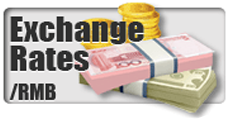
Chinese copper concentrate price coefficient has little room to rise in 2021
----Interview with Wanjun Zhang
Chairman
China National Gold Group International Trading Co., Ltd.
Chairman
China National Gold Group International Trading Co., Ltd.
China National Gold Group International Trading Co., Ltd. is a copper-trading subsidiary owned by China National Gold Group Corporation (China Gold) and now primarily focuses on risk response planning for the sales and prices of copper concentrate and copper cathode. The company is mainly engaged in sales of copper concentrate from China Gold's Wushan Copper Mine in Inner Mongolia, Jiama Copper Mine in Tibet and Sanxin Gold-Copper Mine in Hubei, with annual sales reaching about 140,000 metal tons. The company is also in charge of the partial sales of copper cathode produced by Zhongyuan Gold Smelter to eastern China as well as some marketized trading of copper cathode, both are physical trading targeting major copper rod and copper tube producers, and the current annual trade volume is nearly 150,000t.
Asian Metal: Mr. Zhang, thank you for accepting Asian Metal's interview. Would you please give us a brief introduction of your company?
Mr. Zhang: Founded in 2012, China National Gold Group International Trading Co., Ltd. is a copper-trading subsidiary of China Gold. We are mainly engaged in the sales of products (other than gold) produced by China Gold, including copper concentrate and copper cathode and a small amount of silver, zinc and other metals. In addition, we also make some marketized trading in copper industrial chain. We sell copper concentrate mainly from China Gold's Wushan Copper Mine in Inner Mongolia, Jiama Copper Mine in Tibet and Sanxin Gold-Copper Mine in Hubei, with annual sales of about 140,000 metal tons. We are also in charge of the partial sales of copper cathode produced by Zhongyuan Gold Smelter to eastern China as well as some marketized trading of the material, both are physical trading with major end consumers such as copper rod and copper tube producers, and the current annual trade volume reaches nearly 150,000t. What's more, China Gold also owns copper cathode project in Congo, and we are currently in business negotiations with the project operator to sell its copper cathode to China in the future.


Asian Metal: What is the current situation for copper concentrate market in China? Do you think there is still room for the price coefficient of domestic copper concentrate to rise, following the release of new and expanded smelting capacity over the past few years?
Mr. Zhang: Most copper mines in China are small in size. There are just a few large mines with capacity higher than 70,000 metal tons per annum and all of them are state-owned or directly under the control of the central government, which means limited market-based circulation. Most small-to-medium mines with annual capacity less than 20,000 metal tons have relatively high marketization level but most of them would lock in the annual price coefficient early in the year as they have relatively stable downstream smelter clients. Unless there are significant changes, they normally won't adjust the coefficient. At the same time, most mining companies prefer a safe and stable sales channel. Smelters will suffer heavy losses if the price coefficients are set based on the current treatment charges (TCs) for imported ore, which is not a good thing for mines either in the long run. In conclusion, I believe there is not much room for increase in the price coefficient for domestic copper concentrate this year, and I reckon the overall rise would be 0.5-1 percentage point at most against the current level. Generally speaking, smelters will mark up the price coefficient if copper price goes up, but my opinion is that most smelters won't raise the coefficient any further when copper price exceeds RMB75,000/t (USD11,655/t), and the upper limit for the price coefficient of domestic copper concentrate 20%min would be somewhere between 92% and 93%.
Asian Metal: Currently, China's copper consumption is primarily driven by traditional sectors such as power grid and real estate. What do you think are the potentials and highlights for domestic end-user copper consumption in the future?
Mr. Zhang: I think the most noteworthy highlight is the new energy industry, including NEVs, PV and wind power. China's copper consumption from new energy industry is expected to grow more than 2 million tonnes per annum from the current level in the coming years, but in the short term that is still a far cry from the traditional industries such as power grid. In addition, China's consumption upgrade will lead to growing copper demand. The current copper consumption from many basic infrastructures in our country is very limited, while developed countries in Europe and America consume a large amount of copper to produce construction materials, home decoration, etc. Moreover, China's carbon neutrality goal unveiled during this year's two sessions is also worth noting, and we are also observing and studying the potential growth of domestic copper consumption in the future under the concept of carbon neutrality.

















